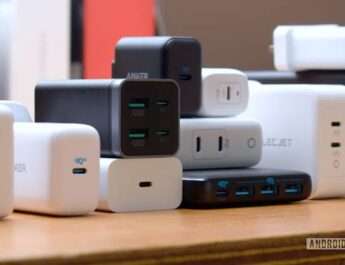In today’s hyper-connected world, the internet is no longer a luxury—it’s a necessity. From streaming your favorite shows to running a business online, a reliable internet connection is crucial. But have you ever wondered how the internet actually reaches your home or office? This is where last mile connectivity comes into play.
If you’re new to the concept, don’t worry as by the end of this article, you’ll understand why last mile connectivity is such a critical part of our digital lives and how it impacts daily internet experience.
What Is Last Mile Connectivity?
Last mile connectivity refers to the final leg of the telecommunications network that delivers internet, phone, or cable services to end-users like you and me. Think of it as the last stretch of a marathon—the part where the runner (data) finally reaches the finish line (your device).
In technical terms, it’s the connection between the internet service provider’s (ISP) central network and the customer’s location. This could be your home, office, or even a coffee shop. While the term “last mile” might suggest a literal distance of one mile, it’s actually a figurative expression. The distance can vary depending on your location and the infrastructure in place.
Why Is Last Mile Connectivity Important?
Last mile connectivity is often considered the most critical part of the entire network. Here’s why:
- It Directly Impacts User Experience
The quality of your internet connection—whether it’s fast, slow, or unreliable—depends heavily on the last mile. If this part of the network is inefficient, you’ll experience buffering, dropped calls, or slow download speeds. - It Bridges the Digital Divide
In rural or remote areas, last mile connectivity is often the biggest challenge. Without proper infrastructure, people in these regions are cut off from essential services like online education, telemedicine, and e-commerce. - It Supports Modern Technologies
From smart homes to IoT (Internet of Things) devices, last mile connectivity ensures that these technologies function seamlessly. Without it, your smart thermostat or security camera wouldn’t be able to connect to the internet.
How Does Last Mile Connectivity Work?
To understand how last mile connectivity works, let’s break it down step by step:
- The Core Network
The journey begins at the ISP’s core network, which is a high-capacity backbone that handles massive amounts of data. This network connects cities, countries, and even continents. - The Middle Mile
From the core network, data travels through the “middle mile,” which includes regional and local networks. These networks act as intermediaries, transporting data closer to the end-user. - The Last Mile
Finally, the data reaches the last mile, where it’s delivered to your home or business. This is where the actual connection happens—via cables, fiber optics, or wireless technologies.
Types of Connectivity Technologies
There are several ways to achieve last mile connectivity, each with its own pros and cons. Let’s explore the most common types:
- DSL (Digital Subscriber Line)
DSL uses existing telephone lines to deliver internet services. It’s widely available and relatively affordable, but speeds can be limited, especially over long distances. - Cable Broadband
Cable broadband uses the same coaxial cables that deliver cable TV. It offers faster speeds than DSL but can suffer from congestion during peak hours. - Fiber Optics
Fiber-optic cables use light to transmit data, offering incredibly fast speeds and high reliability. However, fiber infrastructure is expensive to install, making it less accessible in rural areas. - Wireless (Wi-Fi, 4G, 5G)
Wireless technologies like Wi-Fi, 4G, and 5G are becoming increasingly popular for last mile connectivity. They’re flexible and don’t require physical cables, but signal strength can be affected by obstacles like walls or weather. - Satellite Internet
Satellite internet is ideal for remote areas where other technologies aren’t feasible. However, it tends to have higher latency and lower speeds compared to wired connections.
Challenges
Despite its importance, last mile connectivity faces several challenges:
- High Costs
Building infrastructure for the last mile, especially in rural or hard-to-reach areas, can be prohibitively expensive. - Limited Bandwidth
In densely populated areas, the last mile can become a bottleneck, leading to slower speeds and reduced performance. - Maintenance Issues
Physical cables and equipment are prone to wear and tear, requiring regular maintenance to ensure reliable service. - Regulatory Hurdles
In some regions, regulatory barriers can delay the deployment of new technologies or infrastructure.
Looking Ahead
As technology continues to evolve, so does last mile connectivity. Here are some trends to watch out for:
- 5G Networks
5G promises faster speeds and lower latency, making it a game-changer for last mile connectivity. It’s particularly well-suited for urban areas with high demand. - Fiber Expansion
Governments and private companies are investing heavily in fiber-optic networks to meet the growing demand for high-speed internet. - Satellite Innovations
Companies like SpaceX are launching low-earth orbit (LEO) satellites to provide high-speed internet to even the most remote corners of the world. - Smart Cities
As cities become smarter, last mile connectivity will play a crucial role in supporting technologies like autonomous vehicles, smart grids, and public Wi-Fi.
How to Improve Your Last Mile Connectivity
If you’re experiencing issues with your internet connection, here are a few tips to improve your last mile connectivity:
- Upgrade Your Plan
Consider switching to a higher-speed plan or a different technology like fiber or 5G. - Optimize Your Setup
Ensure your router is placed in a central location and free from obstructions. You can also use Wi-Fi extenders to boost your signal. - Work with Your ISP
If you’re consistently facing issues, contact your ISP to diagnose and resolve the problem. - Explore Alternative Providers
In some areas, multiple ISPs may offer different technologies. Research your options to find the best fit for your needs.
Final Thoughts
Last mile connectivity is the unsung hero of our digital lives. It’s the final link that brings the internet to your doorstep, enabling everything from streaming and gaming to remote work and online learning. While it faces challenges like high costs and infrastructure limitations, advancements in technology are paving the way for a more connected future.
By understanding how last mile connectivity works and its importance, you can make informed decisions about your internet service and advocate for better connectivity in your community.



